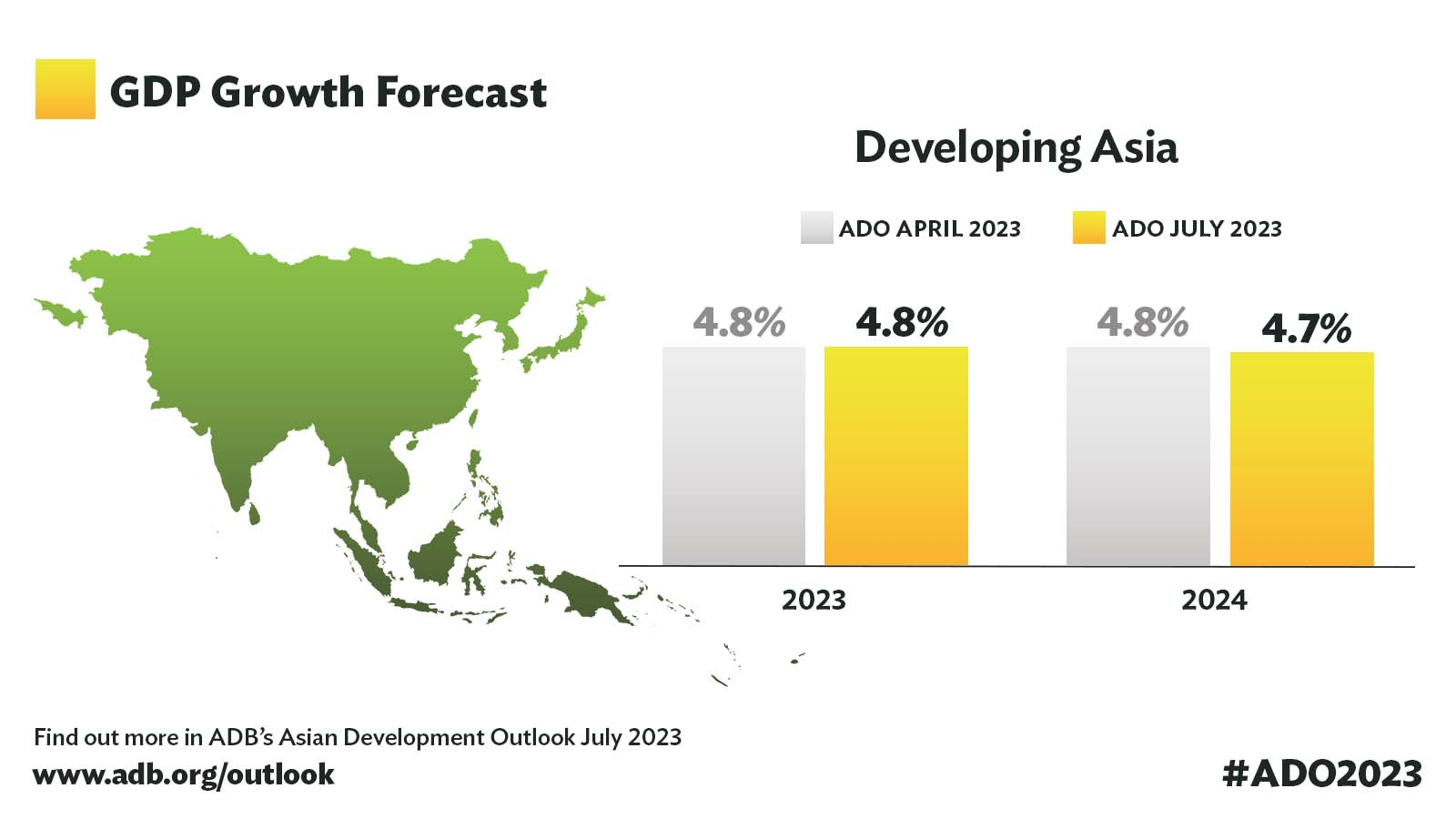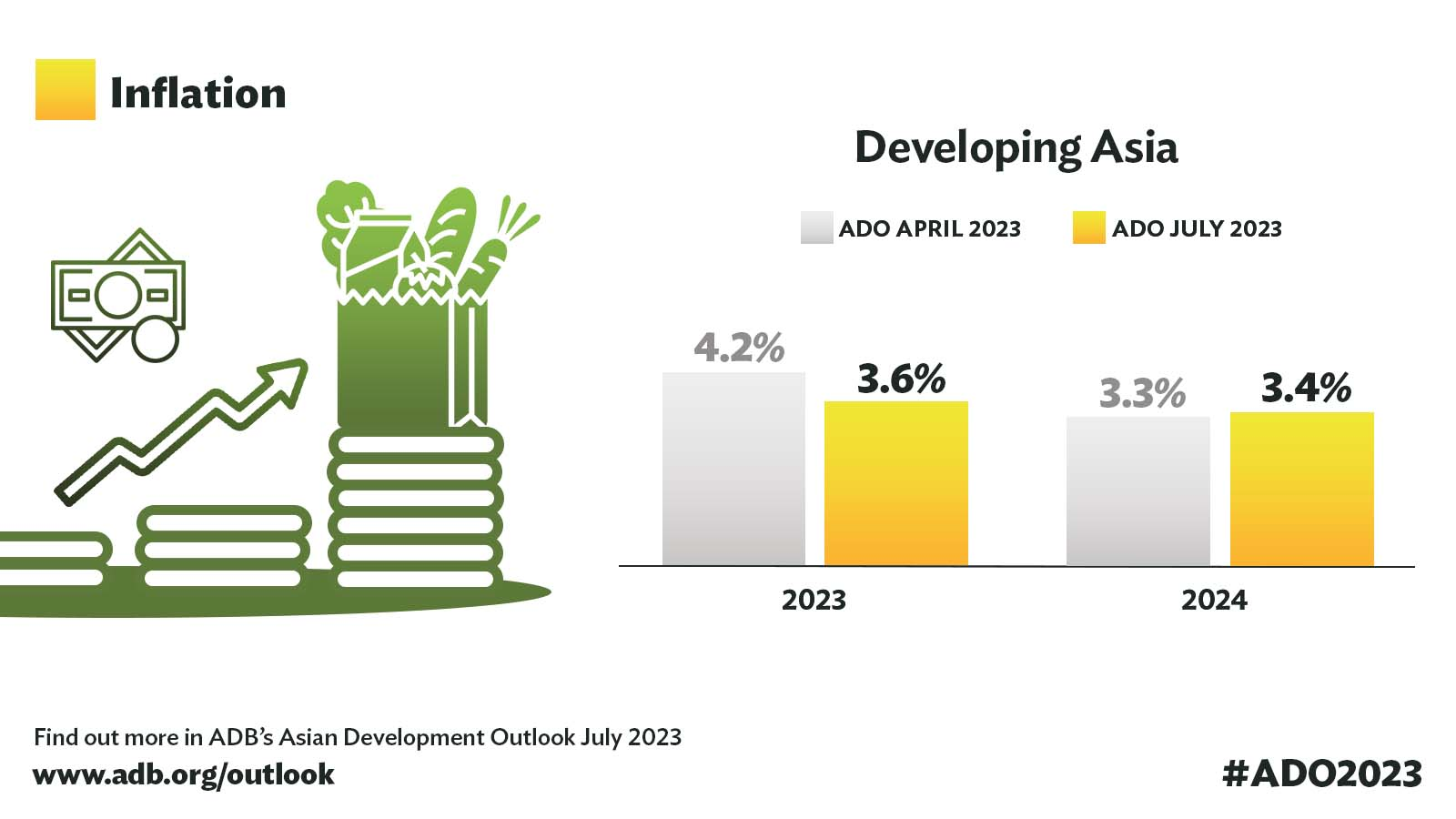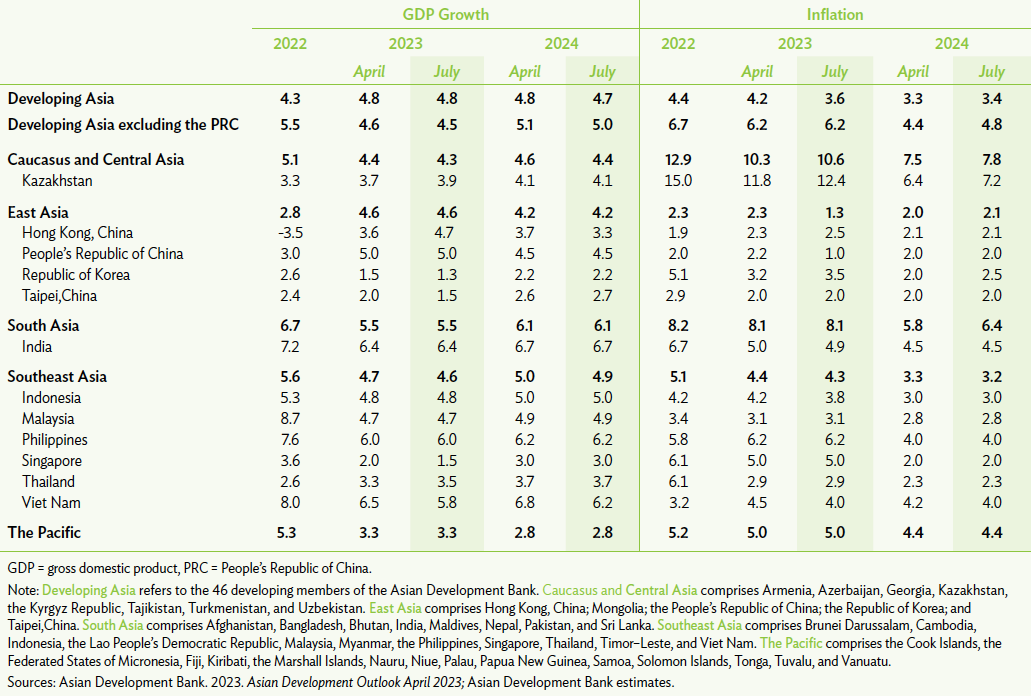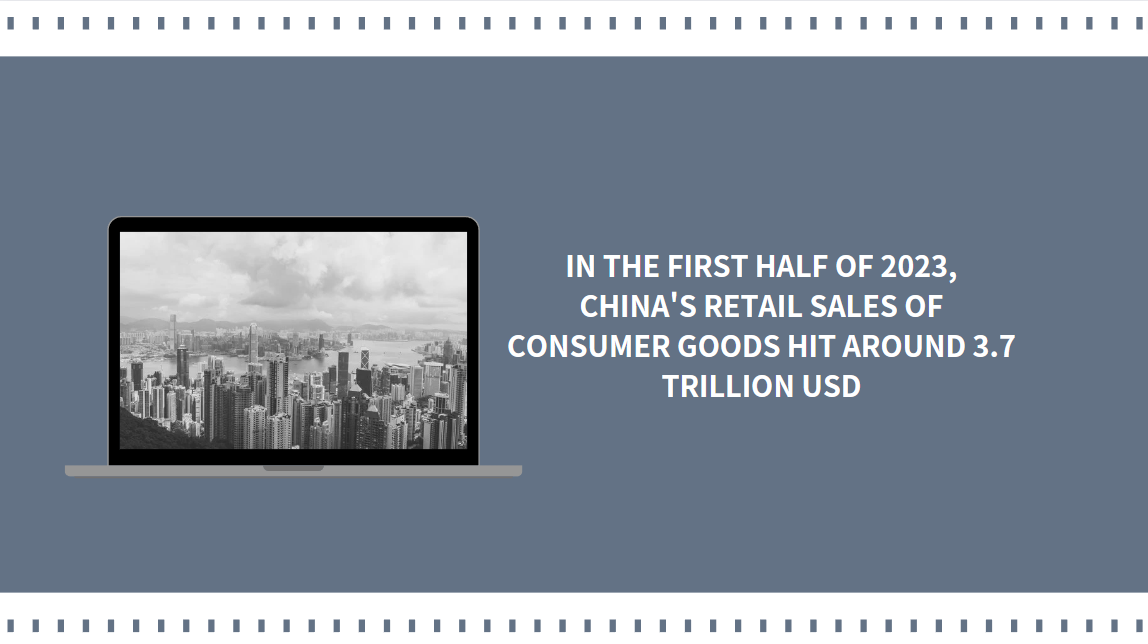ADB Maintains Growth Forecast for Asia and the Pacific


The Asian Development Bank (ADB) is maintaining its growth outlook for developing economies in Asia and the Pacific at 4.8% this year, as robust domestic demand continues to support the region's recovery.
Inflation is expected to continue falling, approaching pre-pandemic levels as fuel and food prices decline, according to the Asian Development Outlook (ADO) July 2023, released today. Inflation in developing Asia is forecast at 3.6% this year, compared with an April forecast of 4.2%. The inflation outlook for 2024, meanwhile, is raised to 3.4% from an earlier estimate of 3.3%.
The reopening of the People's Republic of China (PRC) is bolstering the region's growth. The PRC's economy is projected to expand 5.0% this year, unchanged from the April forecast, amid strong domestic demand in the services sector. However, demand for developing Asia's exports of electronics and other manufactured goods is slowing, as monetary tightening drags on economic activity in major advanced economies. The region's growth forecast for next year is marginally revised down to 4.7% from a 4.8% estimate in April.
“Asia and the Pacific continues to recover from the pandemic at a steady pace,” said ADB Chief Economist Albert Park. “Domestic demand and services activity are driving growth, while many economies are also benefiting from a strong recovery in tourism. However, industrial activity and exports remain weak, and the outlook for global growth and demand next year has worsened.”
ADB is maintaining its growth forecasts for most subregions in Asia and the Pacific. Exceptions include Southeast Asia, where the outlook is lowered to 4.6% this year and 4.9% next year, compared with April estimates of 4.7% and 5.0%, respectively. The forecast for Caucasus and Central Asia is revised down marginally to 4.3% from 4.4% for 2023, and to 4.4% from 4.6% in 2024.
ADB is committed to achieving a prosperous, inclusive, resilient, and sustainable Asia and the Pacific, while sustaining its efforts to eradicate extreme poverty. Established in 1966, it is owned by 68 members—49 from the region.






















































First, please LoginComment After ~